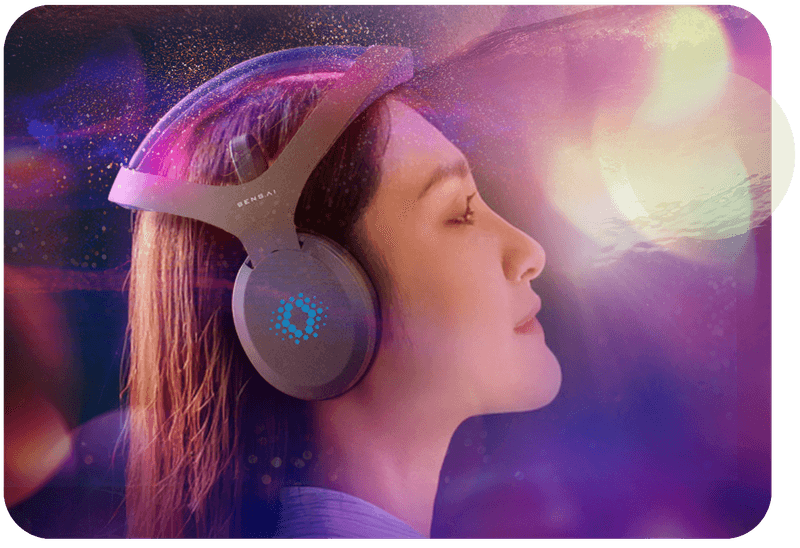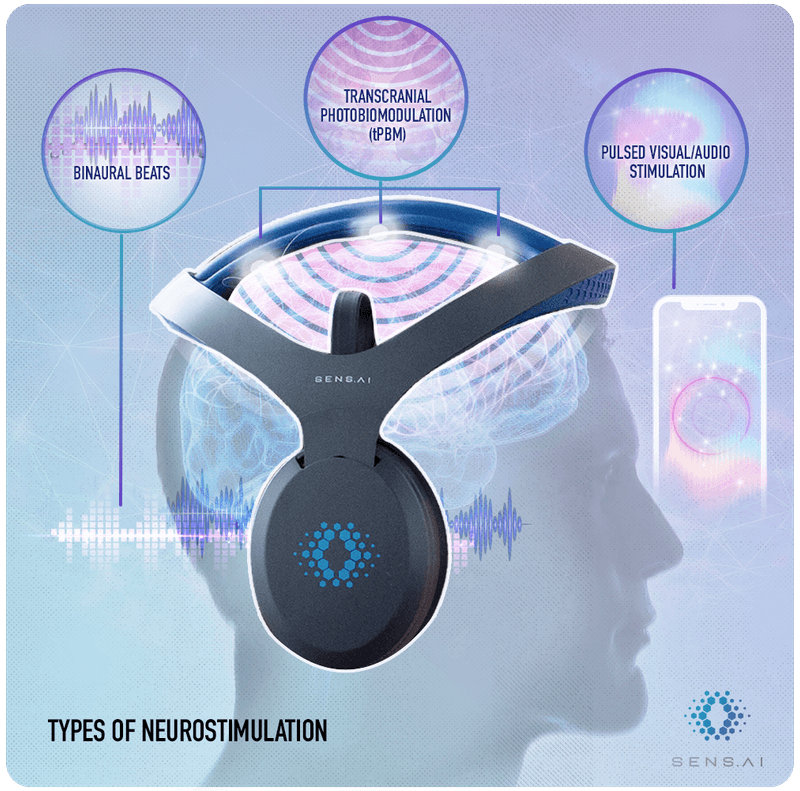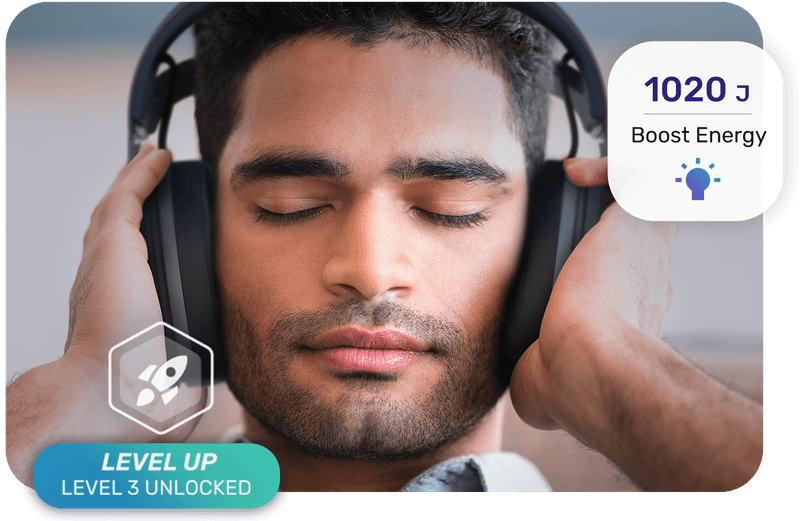Neurostimulation
Guiding the Brain Into New States

Your brain doesn’t just respond to the world—it can be gently guided. Neurostimulation uses non-invasive inputs to influence brain activity, nudging it toward greater balance, energy, and adaptability.

What Is Neurostimulation?
Neurostimulation refers to the use of light, sound, or electrical input to influence how the brain functions. It doesn’t override your brain—it encourages it. These external signals can help shift the brain into states such as those associated with focus, calm, or creative flow.
You can think of neurostimulation like tuning forks placed near a piano string. The vibration doesn’t force the note—it simply encourages a resonant response.
Why Stimulate the Brain?
Throughout the day, your brain shifts between different states—energized, relaxed, distracted, focused. But chronic stress, overstimulation, or even long-standing patterns can make it hard to change gears.
Neurostimulation provides a gentle external cue, helping the brain access beneficial states it might not find on its own. Over time, it can help reinforce these patterns, just like physical therapy strengthens movement pathways.
It’s not about pushing harder—it’s about showing the way. Just as a glass of wine can ease tension or a cup of coffee can boost alertness, neurostimulation offers a gentle nudge—helping your brain shift states with intention rather than effort.
Types of Neurostimulation
Neurostimulation approaches vary in how they deliver input to the brain. The most widely used, non-invasive types include:
- Transcranial Photobiomodulation (tPBM): Light-based stimulation that targets mitochondria to boost cellular energy, enhance clarity, and support neuroplasticity.
- Binaural Beats: Sound stimulation where two tones are played in each ear at slightly different frequencies — encouraging brainwave patterns like alpha (calm) or theta (creative).
- Pulsed Audio/Visual Stimulation: Rhythmic sensory inputs (like flashing lights or pulsed tones) designed to entrain specific brainwave frequencies.
More intensive forms of stimulation—such as electrical stimulation or pulsed electromagnetic fields (PEMF)—are typically classified as medical interventions. These can deliver stronger inputs and may require professional oversight.
Non-invasive approaches used in wellness settings aim to work in harmony with the brain’s natural rhythms, guiding it toward more balanced states without overwhelming the system.


Personalized Frequencies
Different frequencies of stimulation are associated with different brain states. Slower rhythms can support deep relaxation or sleep, while faster ones may enhance focus, energy, or alertness.
Importantly, these bands—like the alpha range (8–12 Hz)—aren’t one-size-fits-all. While some systems use a default setting (e.g., 10 Hz), individuals often respond best to slightly different frequencies. A frequency that calms one person might not work for another.
When stimulation feels ineffective, it’s often due to a mismatch between the signal and the brain’s natural resonance. Personalizing the frequency — within the target band — can dramatically improve effectiveness. Doing this well requires the ability to monitor brain activity in real time, which most systems don’t yet support.
What You Might Feel
Sensory-based neurostimulation is often described as calming, clarifying, or subtly energizing. You might notice a shift in your mental state — like feeling more present, alert, or emotionally grounded. If paired with a meditation that matches the frequencies, the experience can be amplified.
Because it works with your brain’s natural rhythms rather than against them, the experience is typically smooth and easeful. It’s less about a surge and more about support—helping your brain settle into a better state, one session at a time.
Ready to experience Neurostimulation?
Whether you want better sleep, sharper focus, or to evolve into your highest potential—Sens.ai was built for your journey.




